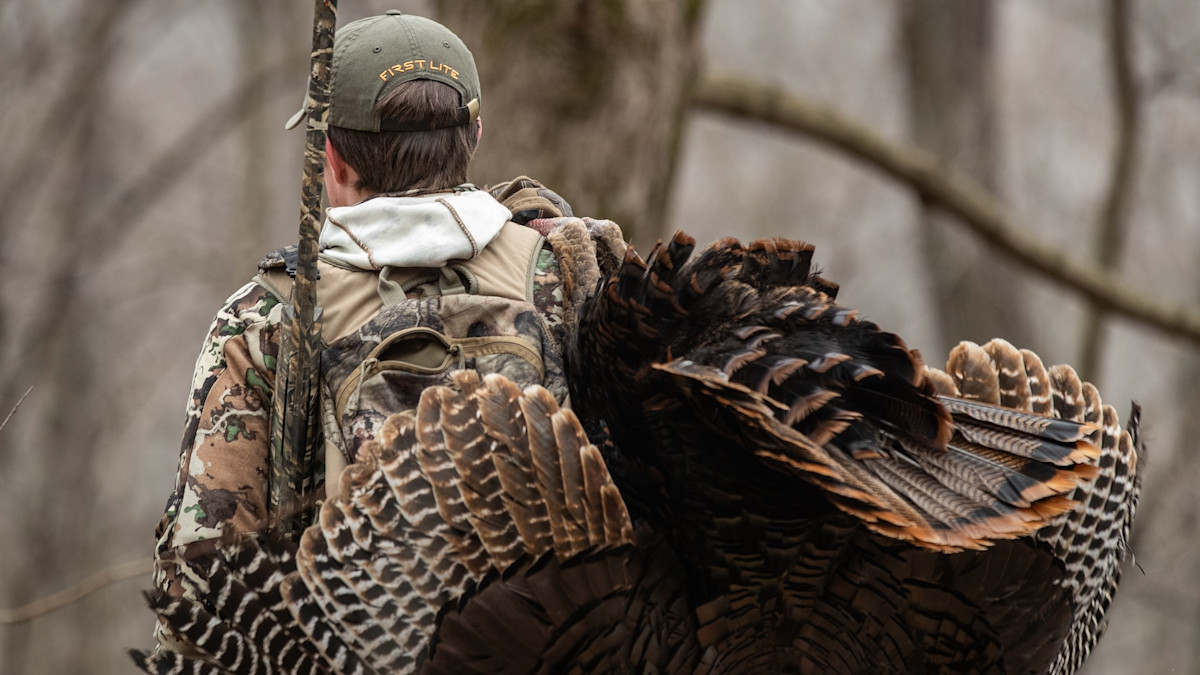
Nothing beats tagging a longbeard right after fly down. You’re back at camp before breakfast, and you look like a turkey guru to your hunting buddies. It’s how most turkey hunters envision a plan unfolding the night before. Unfortunately, it’s not usually the case.
I can count on both hands how many times I’ve had a turkey hunt play out this way. Most of my successful hunts occurred late morning or middle of the day after multiple setups, periods of silence, and pity parties. The latter time frame happens to be one of my favorites to hunt turkeys.
Sure, roosting a bird and killing him right off the limb has its perks, but there’s something more exciting and rewarding about striking a lonely gobbler when you least expect it. At this point in the day, most hunters have called it quits, hens have gone to nest, and those mythical gobblers become more susceptible to seductive hen sounds. So, just in case you don’t bag your bird around sunrise, here are a few tips on how to kill a midday gobbler.
Ambush
Whether you’re hunting private or pressured public ground, you’re bound to encounter a tom that goes silent. However, if you know where the turkeys want to be, you can fill your tag without ever making a call.
To do that, you’ll need to find fresh turkey sign or glass them up in open country. This applies to stubborn or “call-shy” gobblers too. If you find tons of turkey scratching and droppings in the timber, you can feel confident that turkeys will probably show up there eventually, so it’s worth a sit.
Look For Strut Zones
The same applies to strut zones, which are exactly what they sound like—zones or areas where turkeys like to strut. These areas typically provide gobblers with some type of visual advantage (think ridge tops, open pastures, or creek bottoms).
Whether you glass up a couple longbeards parading around a pasture or find drag marks on a dirt road, you’ll want to spend time in these places. It’s not as thrilling as calling them in, but if you’re bent on punching your tag and want to forego that whole dance, set up in that spot before they get there. You’ll need to know how to scout for turkeys, and this might take a few observational sits. While it’s not a guarantee, turkeys can be predictable.
My late grandfather killed his best turkey after cutting fresh tracks and drag marks. One afternoon while riding the roads of his hunting camp, he spotted the fresh sign on a dirt road overlooking a clearcut. The next morning, he went in before daylight and never heard a turkey gobble but felt confident in the spot. He returned around noon, set up within gun range of the drag marks, and never called. A few hours later, he heard drumming and watched as a tank of a longbeard strutted into the road one last time. The turkey never gobbled.
Run-and-Gun
This term gets thrown around a lot, and there’s a right and wrong way to go about it. Most hunters interpret run-and-gun as driving to as many spots as possible while you hop out, owl hoot a few times or even yelp, and then move on after a few seconds of silence. You might get lucky and strike a bird this way, but those odds are slim. Despite the name, run-and-gun requires a bit more patience, and turkey hunting favors the patient.
Instead of bouncing from spot to spot, pick a parcel of public ground and make your way through it, calling periodically and listening. The key is to listen more than you call. Sometimes, you’ll get a response. But most times, longbeards will come in silent.
Whenever I’m working my way through a place, I’ll start with a few clucks and yelps. If nothing immediately responds, I’ll up the volume and run another sequence of yelps, adding a few more than the previous time. I can’t tell you how many times I’ve had a gobbler respond after the second try.
If nothing responds after the second sequence, I’ll give a spot fifteen minutes before moving on. During those fifteen minutes it’s important to listen for drumming, scratching, or walking. Most sad turkey hunting stories involve a silent tom and an impatient hunter. My early turkey hunting days were full of such blunders. A little listening might be the difference in a punched tag and a spooked turkey if you know how to set up for turkeys in the woods.
If I’m run-and-gunning and come across a spot with fresh scratching, droppings, or other sign, I’ll give that spot a little more time. In this case, I’ll do some light clucking, purring, or other contentment calls and keep it to a minimum. Just last week, I went to a spot where I knew turkeys like to frequent in the afternoon. I hooted and didn’t get a response. Instead of calling, I decided to give it half an hour and listen. Before that half-hour ended, a bird gobbled on his own. I yelped back to him, he cut me off, and I went silent. Not twenty minutes later, he strutted into a dirt nap.
Just be Patient
It’s true, gobblers aren’t as vocal later in the day as they are on the limb, but don’t let that fool you into thinking they aren’t killable. Just because they’re not gobbling their heads off doesn’t mean they’re not willing.
It can be easy to get sloppy with your calling and walking if you’re not hearing any birds during the middle of the day. However, if you stay patient and hunt like there’s a gobbler behind every tree, you won’t be caught off guard when one finally does respond.






